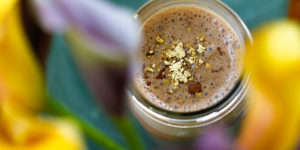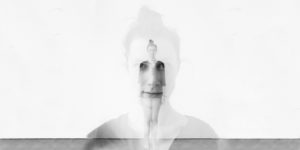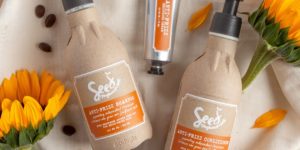Healing From Within: The Keys to Curing Chronic Illnesses Through the Mind-Body Connection
BY NATHANIEL ALTMAN

Emotions, Mind, and Spirit
Donald M. Epstein, D.C., author of The Twelve Stages of Healing and Healing Myths, Healing Magic, has often said that healing is “an inside job.” He means that the most essential components to healing, such as life force, harmony, regeneration, and repair, are not given to us by others but come from within. This is the basis of mind body healing. The innate healing power of the mind is part of our birthright and is within reach of every one of us.
In his essay “There Is No Cure for Healing,” Dr. Epstein writes: “Healing is a process, not a magical event. Nothing new is added to your body or mind… Nothing is taken out. Healing involves a greater experience of oneness, wholeness, and reconnection with all aspects of your being.”Many of us have known the power of the mind to heal the body because we’ve known people who experienced a health problem and, despite the finest medical care (and often a positive initial medical prognosis), got sicker and died. We have also seen people with life-threatening terminal diseases who were given up on by their doctors return from the brink of death to enjoy long, healthy, and productive lives. Most such cases of mind body healing are downplayed by members of the medical profession because they go against the dominant view that outside agents like drugs, radiation, and surgery are the determining factors in recovering one’s health. The belief that healing primarily occurs from within is incomprehensible.
The Power of the Mind to Heal the Body: José’s Story
Fifteen years ago, my friend José was diagnosed with pancreatic cancer, which had spread to the liver. His physician, a prominent oncologist at a major Boston hospital, referred to José as a sad case to his colleagues and held out no hope for his recovery. He recommended surgery as the only way to prolong José’s life.
José decided to return to his native Brazil, where he was examined by other oncologists at the hospital affiliated with Brazil’s finest medical school. They confirmed the original diagnosis and, like the Boston doctor, held out no hope for his recovery. They offered him surgery, radiation, and chemotherapy, all of which were refused. José, a psychiatrist, had a medical degree and knew that these therapies would kill him. He decided instead to retreat to the countryside, where he embarked on a holistic path to mind body healing that involved intense spiritual and psychological work, using a number of native healing plants. This led to important insights about his life, which brought about major changes in attitude, belief, behavior, and diet, all of which had a positive (and powerful) impact on his health.
When José returned to the hospital in Rio de Janeiro for a checkup six months later, a CT scan and other tests determined that the cancer had completely disappeared. His doctors were flabbergasted. Since they knew that nearly everyone with advanced pancreatic cancer dies within six months of the initial diagnosis, they simply could not accept evidence of a complete remission, let alone one taking place in the absence of traditional medical therapy. Although they were happy for José (who remained in excellent health for another eight years before dying of a heart attack), they announced that they must have erred in their original diagnosis and that he didn’t have cancer after all! The idea of a complete recovery from pancreatic cancer through holistic healing was inconceivable to them.
Mind Body Healing
The holistic view of healing teaches that human beings are more than just the physical body and that emotions, thoughts, attitudes, and spirituality play an essential role in healing. Rather than conform to the predominant medical view that there is one cause and one cure to disease, holism stresses the mind body connection and maintains that health and disease depend on a dynamic and often subtle interplay among the physical, emotional, mental, and spiritual aspects of our being, as well as our relationship to the environment in which we live.
During the past few years, an important new field called psychoneuroimmunology has come into being. It is concerned with identifying the links between the mind, the brain, and the immune system and how they communicate with each other. Researchers like Candace B. Pert, Ph.D., research professor in the Department of Physiology and Biophysics at Georgetown University Medical Center in Washington, D.C., have scientifically confirmed that our minds and feelings influence health, and our health has a powerful effect on the mind.
In her book Good Health in a Toxic World, Sara Shannon summarized the major findings of psychoneuroimmunology in understanding the interplay between mind body healing:
1. Mind-directed, cell-enhancing chemicals communicate directly with the immune system.
2. Mental attitude and mood can alter the course of disease.
3. The mind can will changes in the body.
4. Stress-related hormones weaken the immune system.
5. Chemicals made by the immune system communicate with the brain.
6. The brain talks to the immune system, and the immune system talks to the brain.
These discoveries reveal the mind body connection and show more emphatically than ever before that the way in which we view ourselves and life’s situations can affect our immune response. Fear, hopelessness, and the feeling that nothing works have been linked to the production of neurochemicals that can lower immune response and promote the aging process.
Chemicals (known as neurotransmitters) that are created by positive feelings toward life and its highs, lows and challenges strengthen your immune system, slow down the aging process, and protect you from cancer and a number of viruses. While these different thoughts and emotions may have a temporary impact on health, chronic, repeated, and habitual thought and emotional patterns can have a far more profound, long-term impact on our well-being. This effect underlies the power of the mind to heal the body. Feelings of fear, hopelessness, worry, and worthlessness all affect our body-mind system, however subtle these effects may be. Critical attitudes, beliefs in negative outcomes, anger, resentment, and the belief (whether conscious or not) that “I have no control over my life” have been linked to a number of disease states, including cancer, ulcers, and heart disease.
Stress and Distress
Researchers such as Hans Selye, M.D., have found that it is not necessarily the stresses of life that lead to disease, but rather how we adapt to these stresses. The ways in which we adapt are often based on our perspectives on ourselves and our life, many of which are learned from childhood. When a stressful incident occurs (whether the loss of a loved one, a difficult task, or a change in economic status), we tend to look at the problem through these old perspectives. If we are stuck in rigid, fixed perspectives about ourselves and the way that life should be, we often find it far more difficult to deal with life’s changing events. Instead of adapting to the situation and seeking practical solutions, we may instead feel hopeless, frustrated, and afraid. Rather than becoming a stimulus for action, the life challenge leads us to fear and paralysis.
Disease: A Wake-Up Call to Change
In the context of holistic mind body healing, illness should never be viewed as a punishment or a failure. Instead, disease can be seen as the result of a lack of alignment among the physical, emotional, mental, and spiritual aspects of our being. Rather than being viewed as “bad” or “evil,” symptoms are the body’s way of telling us that something is wrong. They are a wake-up call that tells us that we need to change old attitudes, perspectives, and lifestyle habits that may have contributed to our health problem. To the degree that we are sensitive to our body’s subtle messages, we can often deal with a problem before it becomes serious.
Life-threatening diseases like cancer and AIDS can play a special role in the transformative process. They challenge us to the very core of our being and can mobilize us—as cancer did for my friend José—to make major changes in personality, thinking, and lifestyle.
Illness forces us to make choices. Choices based on fear and other limited perspectives often lead to more suffering, whereas those based on knowledge and hope have often been found to lead to healing. These choices that facilitate mind body healing may involve seeking greater inner alignment and harmony, changing a destructive emotional or thought pattern, relinquishing resentment, letting go of childhood hurts, and coming to terms with other difficult aspects of one’s past.
In their book Living in Hope, Cindy Mikluscak-Cooper, R.N., and Emmett E. Miller, M.D., list some traits that long-term survivors with AIDS have in common. Many are similar to those of long-term cancer survivors. The ones appearing here are applicable to individuals suffering from all serious illness, whether it is life-threatening or not.
These traits include the following:
+ Having a sense of personal responsibility for their health and a sense that they can influence it.
+ Having a sense of purpose in life.
+ Finding new meaning in life as a result of the illness itself.
+ Having previously mastered a life-threatening illness or other life crisis.
+ Having accepted the reality of their diagnosis, yet refusing to believe that it is a death sentence.
+ Having an ability to communicate their concerns to others, including concerns regarding the illness itself.
+ Being assertive and having the ability to say no.
+ Having the ability to withdraw from involvements and to nurture themselves.
+ Being sensitive to their body and its needs.
Other common traits among long-term AIDS survivors that speak to the healing power of the mind are addressed in Scott J. Gregory’s book A Holistic Protocol for the Immune System. Ten points in particular stand out, summarized as follows:
1. They had expectations of favorable results regarding their situation.
2. They took charge of their healing and took control of decisions that vitally affected their lives.
3. They developed a sense of humor and learned to laugh.
4. They developed compassion toward others.
5. They were patient in their expectations and did not expect to be healed overnight.
6. They changed their attitudes about themselves and developed a stronger self-image.
7. They realized that there was no one thing that could cure them and sought a combination of life-reinforcing factors and modalities.
8. They had no fear of death—or life.
9. They educated themselves in prevention and treatment.
10. They were fighters.
Self-Nurturing
An important component in the mind body healing process is creating an environment that will facilitate the healing power of the mind. This is not unlike a farmer preparing the soil in expectation of an abundant crop. While the environment will differ according to our personal needs and life situation, it involves often-overlooked aspects of ourselves: our emotional being and our mental being. The following sections offer a few ideas that can enhance self-nurturing on emotional, mental, and even spiritual levels.
Nurturing the Emotional Self
Our emotions play an important role in health and disease. Positive feelings produce neurochemicals that strengthen the immune system; negative, repressed, or distorted emotions can decrease immune response and open the door to a variety of health problems. This is why emotional well-being is an important aspect of healing your body with your mind. Rather than try to repress, deny, or control our emotions, we need to nourish and guide them so that they can help us become integrated and whole.
Emotional nurturing can involve creating a support system. This may take the form of being with others who support our mind body healing process, such as relatives or friends. At times, we may need to distance ourselves from those who are not supportive or let them become more aware of our needs and how they might assist us in a positive way.
Accepting all of our feelings (including sexual feelings) can be a powerful mind body healing technique. Expressing anger, grief, frustration, and sadness is not always as easy in our culture as the expression of joy, excitement, and affection. Like a river whose current is obstructed, emotions that are blocked tend to become polluted and harmful, as by their very nature emotions are to be experienced and expressed. Long-term repression of emotions has long been viewed as a factor in a number of common diseases, including cancer, stroke, and heart attack. It probably contributes to less dramatic diseases as well, such as depression and chronic fatigue. This is why we need to reclaim our mind body connection through emotions and allow them to be expressed in non-destructive ways.
Candace B. Pert writes in Molecules of Emotion: “I believe all emotions are healthy, because emotions are what unite the mind and the body. Anger, fear, and sadness, the so-called negative emotions, are as healthy as peace, courage and joy. To repress these emotions and not let them flow freely is to set up dis-integrity in the system, causing it to act at cross-purposes rather than as a unified whole. The stress this creates, which takes the form of blockages and insufficient flow of peptide signals to maintain function at a cellular level, is what sets up the weakened conditions that can lead to disease. All honest emotions are positive emotions.”
Through meditation, dynamic exercise, or different forms of body-oriented modalities such as bioenergetics, network chiropractic, Zero Balancing, and other mind body healing techniques, we can learn to accept our human emotions and channel them into more positive areas of expression.
Another important component of emotional nurturing and healing your body with your mind is humor. In his book Anatomy of an Illness, Norman Cousins wrote about how ten minutes of belly laughter at frequent intervals (he watched Marx Brothers movies and old Candid Camera television shows) helped him overcome a life-threatening disease.
Perhaps most importantly, we need to heal old emotional wounds from the past. Making peace with others, which can include forgiving those who have hurt us, asking forgiveness from those we have hurt, letting go of resentment, and especially forgiving ourselves, is essential to this process.
Nurturing the Mind
At this point in human history, we have access to more information than ever before. While access to information can be valuable, the unrelenting amount of gossip, sensationalism, superficial ideas, and negative, fear-producing concepts from advertising, news reports, and politics is a type of mental pollution that many of us can do without. They dull our mental awareness, keep us living on the periphery, and inhibit our innate mind body connection and healing capacity.
Of particular concern is the constant barrage of negative reports concerning death and disease. Despite Louis Pasteur’s advice that “the microbe is nothing; the soil is everything” (meaning that a healthy body will not provide fertile soil for germs to cause disease), news reports and magazine articles often focus on an ever-increasing number of outside agents that will give us cancer, tuberculosis, AIDS, and a myriad of other diseases. This creates a mental environment of fear and hopelessness.
Unless we throw out our radio and television and decide to avoid reading the news or going online, we probably cannot escape this onslaught. Yet we can avoid much of this negative information through our powers of discernment and discrimination. We can also choose not to hook into initial reports on certain diseases, understanding that many are the result of a limited approach and partial understandings. For example, in the early 1980s, we were told that AIDS was a terminal disease. After it was found that many patients remained alive and productive five to ten years after their original diagnosis, the media decided that it wasn’t necessarily a terminal disease after all. In 2003, SARS (severe acute respiratory syndrome) was touted as a disease that would kill millions, but fewer than eight hundred people died.
More recently, the bird flu pandemic was touted as a disease that would kill millions of Americans. While not minimizing the dangers of avian influenza, instilling fear as a way to deal with disease is counterproductive. According to Dr. Marc Siegel, a practicing internist and associate professor of medicine at the New York University School of Medicine, “If anything is contagious right now, it’s judgment clouded by fear.” Instead of a bird flu pandemic, we have a fear pandemic. History and logic dictate that the best way to fight off bacterial and viral diseases is with commonsense prevention techniques coupled with a strong immune system.
Questioning is an important aspect of healing your body with your mind. As children, a lot of us formed certain ideas about ourselves, our talents, and our tasks in life. We also created ideas about other people and the world in which we live. While many of those ideas may have been useful at one time, they may not be useful now. The image that my older brother is mean and will beat me up may have been true when we were five, but at age fifty, this is no longer the case. The old idea that I’m no good at art may reflect a bad experience in a second-grade art class that still stops us from experiencing our innate creativity as an adult. For this reason, we need to question whether an old concept is still valid and whether it can be changed. As a result, we expand our perspectives, which can bring us new opportunities for understanding and personal growth.
A common negative image is believing that because a friend or relative has died of a certain disease, we will also. While we may be genetically predisposed to certain health problems, this does not mean that they will manifest as symptoms. A friend once put it to me this way: “Just because my father had cancer doesn’t mean that I will. I don’t think like him, eat like him, or live like him. We are different people.” In addition, we need to be aware that the body that we have now is not the same one we had five or ten years ago, because every cell of the body is in the process of dying and others are being regenerated constantly. The health of future cells, and therefore the future health of our entire body and mind, is dependent on how we live, eat, and think in the present. As members of the human race, we have become imbued with beliefs or myths that often prevent the healing process; we need to create other beliefs that facilitate the healing power of the mind.
In his breakthrough book Healing Myths, Healing Magic, Dr. Donald Epstein focuses on social myths (“healing means understanding what went wrong or who did what to me”), biomedical myths (“healing takes time”), religious myths (“disease is a punishment for my sins”), and new-age myths (“I must understand my feelings to heal”) and suggests alternative ways to help us reclaim our innate ability to heal. He wrote: “Every culture sleeps within its own mythology. If we wish to awaken from our sleep, we must be willing to evaluate the way we are programmed to experience our world, our circumstances, and ourselves. Then we may choose our own stories of the world we live in, and the way in which we will live in it. When we awaken from our sleep and question the stories given to us by our authority figures, we may choose to continue with those stories, or we can create new stories that work even better for us. Choosing our own stories can be a liberating, life-transforming, and empowering experience.”
Spiritual Nurturing
Spirituality is often believed to have little impact on healing by physicians, yet it can provide the foundation for deep healing to take place. People know the source of spirituality by many names. Whatever label we choose to give that source, spirituality involves tapping into the deeper levels of our being where inner wisdom and love can be found. As we connect to this love-wisdom, we are able to create a greater sense of harmony and alignment among all aspects of our being, allowing the healing process to occur. If we participate in self-nurturing on the emotional and mental levels, spiritual nurturing is a natural result, because all are interconnected and interrelated.
Mind Body Healing Technique: Creative Visualization
Creative visualization is often used as a mind body healing technique. There are a number of excellent books dealing with visualization available in bookstores and libraries. Louise Hay outlines the three basic parts of a positive visualization, which anyone can adapt to their individual needs:
1. An image of the problem or pain or dis-ease, or the dis-eased part of the body
2. An image of a positive force eliminating this problem
3. An image of the body being rebuilt to perfect health, then seeing the body move through life with ease and energy
Positive visualization can incorporate literal images, symbolic images related to treatment, or abstract images. One universal image is a source of bright, white healing light; we can imagine it shining around (and through) every aspect of our being.
Excerpted from The New Oxygen Prescription by Nathaniel Altman © 2017 Healing Arts Press. Printed with permission from the publisher Inner Traditions International. InnerTraditions.com
About The Author
Nathaniel Altman is a medical writer and researcher who has written more than 15 books on nature and alternative healing, including The New Oxygen Prescription, The Honey Prescription, Healing Springs and A Russian Herbal. He lives in Brooklyn, New York. Visit his website: nathanielaltman.com























